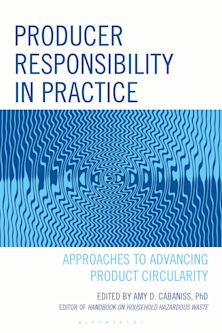The Euro
European Integration Theory and Economic and Monetary Union
Amy Verdun (Anthology Editor) , William M. Chandler (Contributor) , Osvaldo Croci (Contributor) , Patrick M. Crowley (Contributor) , Kenneth Dyson (Contributor) , R. Amy Elman (Contributor) , David Howarth (Contributor) , Erik Jones (Contributor) , Peter H. Loedel (Contributor) , Lucio Picci (Contributor) , F. A.W.J. Esch (Contributor) , Dieter Wolf (Contributor) , Lloy Wylie (Contributor)
The Euro
European Integration Theory and Economic and Monetary Union
Amy Verdun (Anthology Editor) , William M. Chandler (Contributor) , Osvaldo Croci (Contributor) , Patrick M. Crowley (Contributor) , Kenneth Dyson (Contributor) , R. Amy Elman (Contributor) , David Howarth (Contributor) , Erik Jones (Contributor) , Peter H. Loedel (Contributor) , Lucio Picci (Contributor) , F. A.W.J. Esch (Contributor) , Dieter Wolf (Contributor) , Lloy Wylie (Contributor)
This product is usually dispatched within 3 days
- Delivery and returns info
-
Free CA delivery on orders $40 or over
You must sign in to add this item to your wishlist. Please sign in or create an account
Description
With euro banknotes and coins starting to circulate as of January 2002, this timely book comes at a crucial juncture for the European Union. Exploring the origins of and progress toward the introduction of the euro, the contributors focus on the importance of economic and monetary union (EMU) as part of the larger process of European integration. Thus, chapters consider the value and limits of a range of theoretical approaches for understanding economic and monetary integration, the pros and cons of EMU's institutional design, and country-specific experiences. With an international group of leading scholars representing a range of disciplines, this book offers a broad perspective on the dynamics of EMU.
Table of Contents
Part 2 The Explanatory Power of Intergration Theories: Examining Economic and Monetary Union
Chapter 3 Merging Neofunctionalism and Intergovernmentalism: Lessons from EMU
Chapter 4 Neofunctionalism and Intergovernmentalism Amalgamated: The Case of EMU
Chapter 5 Why States Want EMU: Developing a Theory on National Preferences
Part 6 Theorising Monetary Integration: Ideas and Identities
Chapter 7 EMU: A Neoliberal Construction
Chapter 8 EMU as Europeanisation: Convergence, Diversity, and Contingency
Chapter 9 The Gendered Limitations of European Citizenship and Monetary Integration
Part 10 Institutions and Accountability
Chapter 11 Multilevel Governance and the Independence of the European Central Bank
Chapter 12 Macroeconomic Preferences and Europe's Democratic Deficit
Chapter 13 The Shape of Things to Come: The EU's Post-EMU Institutional Architechture
Part 14 Country Studies
Chapter 15 EMU, Integration Theories, and the Annoying Complexities of French Policy-making
Chapter 16 German Influence in Shaping EMU: Still a Tamed Power?
Chapter 17 European Monetary Integration and Integration Theory: Insights from the Italian Case
Part 18 Conclusion: Lessons from Economic and Monetary Union for Theorising European Integration
Product details
| Published | Mar 11 2002 |
|---|---|
| Format | Paperback |
| Edition | 1st |
| Extent | 304 |
| ISBN | 9780742518841 |
| Imprint | Rowman & Littlefield Publishers |
| Dimensions | 229 x 148 mm |
| Series | Governance in Europe Series |
| Publisher | Bloomsbury Publishing |
About the contributors
Reviews
-
An accomplished set of papers that span a range of theoretical perspectives and together provide a novel and useful commentary on one of the most intriguing developments in the international political economy-European monetary union.
Kathleen R. McNamara, Princeton University
-
A worthy contribution to the understanding of European integration in general and EMU in particular.
German Politics
-
A broad and accessible introduction to the EMU maze that guides us through contending theories and evaluates their relevance. The authors give expert, often iconoclastic, critiques to inspire us on our journey. Policy experts and academic analysts alike will benefit from reading this volume, while students and the lay reader will find it readily opens up the maze to them as well.
Kevin Featherstone, University of Bradford


































